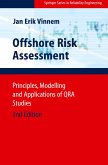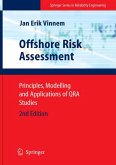7. 1. 1 Background Uncertainty can be considered as the lack of adequate information to make a decision. It is important to quantify uncertainties in mathematical models used for design and optimization of nondeterministic engineering systems. In general, - certainty can be broadly classi?ed into three types (Bae et al. 2004; Ha-Rok 2004; Klir and Wierman 1998; Oberkampf and Helton 2002; Sentz 2002). The ?rst one is aleatory uncertainty (also referred to as stochastic uncertainty or inherent - certainty) - it results from the fact that a system can behave in random ways. For example, the failure of an engine can be modeled as an aleatory uncertaintybecause the failure can occur at a random time. One cannot predict exactly when the engine will fail even if a large quantity of failure data is gathered (available). The second one is epistemic uncertainty (also known as subjective uncertainty or reducible - certainty) - it is the uncertainty of the outcome of some random event due tolack of knowledge or information in any phase or activity of the modeling process. By gaining information about the system or environmental factors, one can reduce the epistemic uncertainty. For example, a lack of experimental data to characterize new materials and processes leads to epistemic uncertainty.








